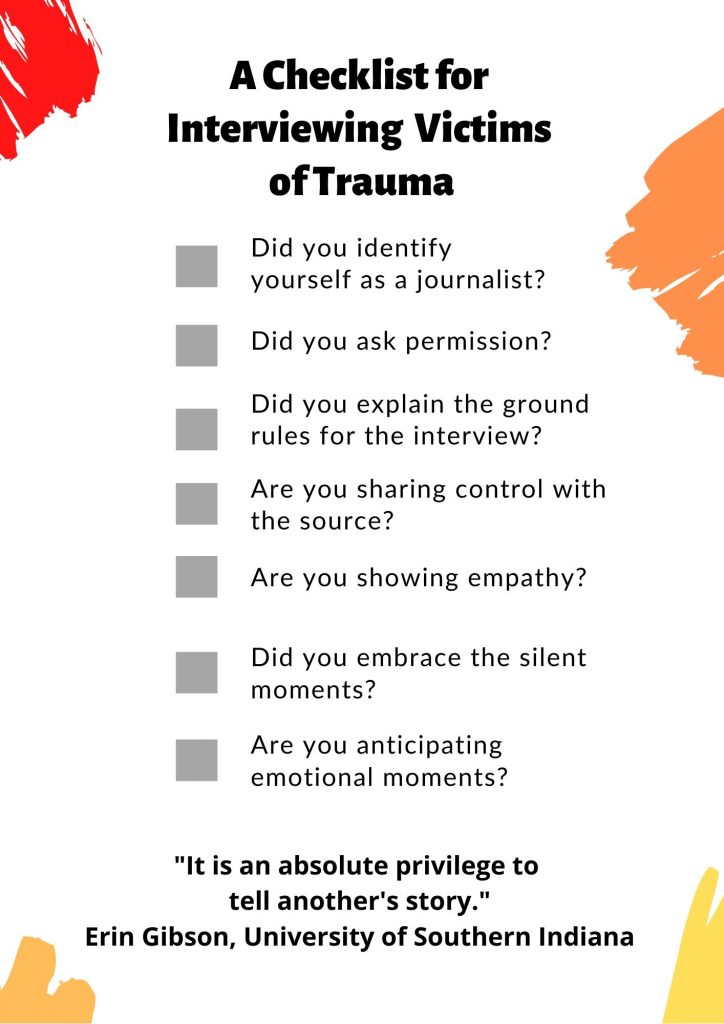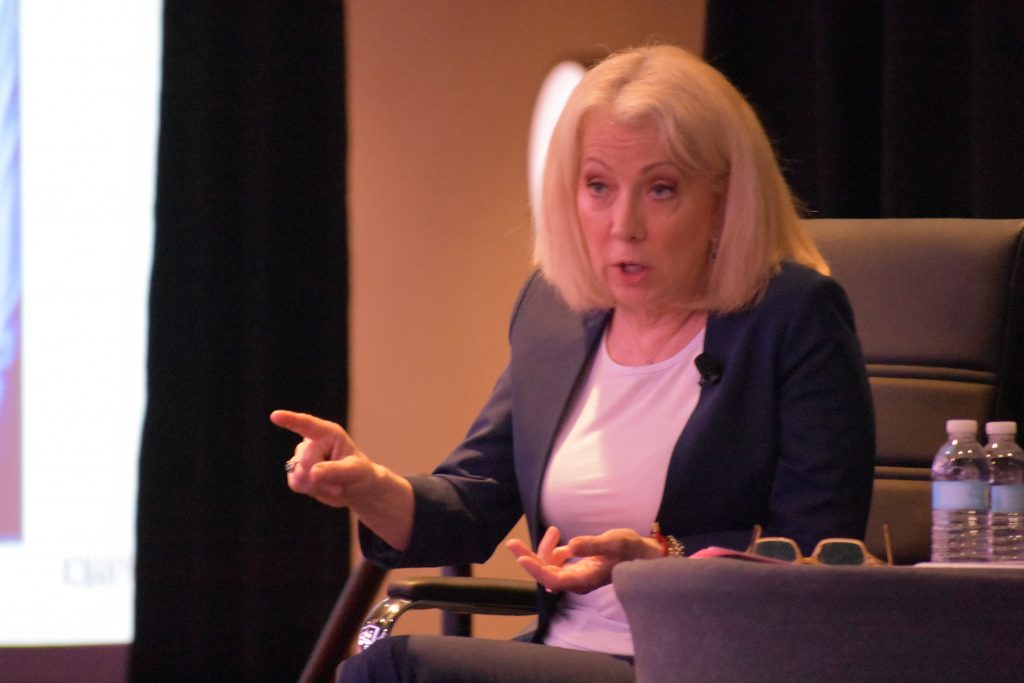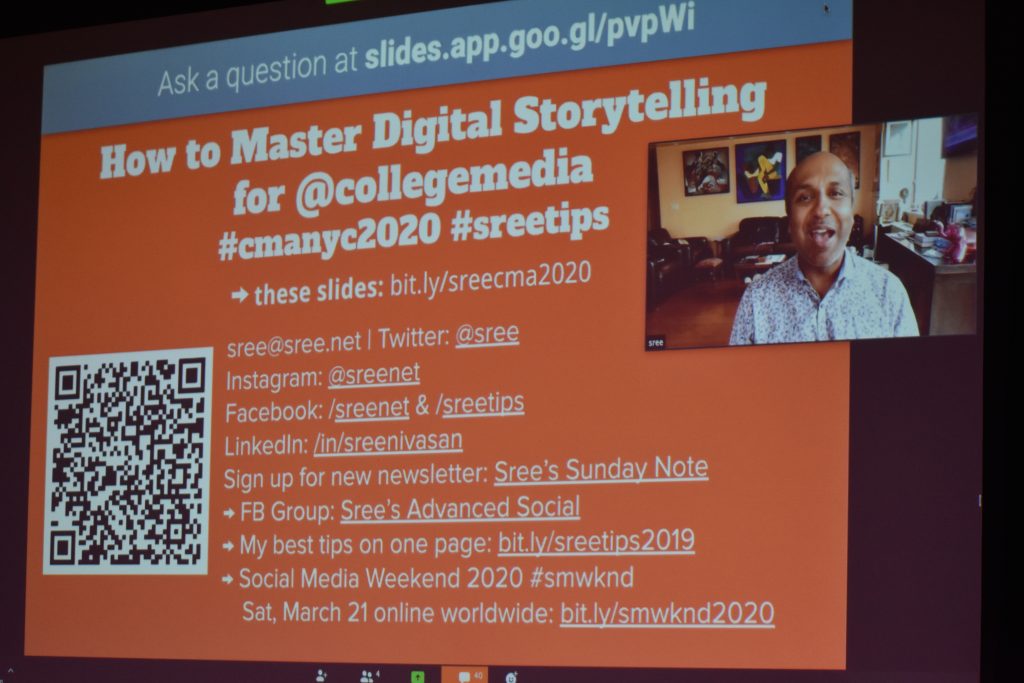Month: March 2020
PHOTO GALLERY: Keynote Speaker – Beth Karas on “Covering Crime: A View from the Trenches”
5 takeaways for EICs in the real world
Students holding the Editor-in-Chief position at their respective publications have a unique opportunity in transitioning to the professional world. Peter Copeland, a journalist and author from Washington, D.C., held a discussion for EICs to share advice on developing skills and mindsets that will help them later on in their careers.
1. Try to learn the business of news
One of the skills EICs have the opportunity to work with is the business side of media. Copeland explained that the business of news changes quickly, and gaining an understanding of the industry as a whole can be beneficial when looking forward to job applications.
2. Learn how to use social media
Young journalists entering the workforce will need social media skills.
“You’re all going to be expected to have social media skills,” Copeland said, with an emphasis on platforms like Twitter.
Personal accounts will be important for students’ professional images as well.
“If you apply for a job, they’re going to look for you on social media,” Copeland said. He advised deleting any posts young professionals might not want to be seen by potential employers now rather than waiting to clean up their profiles later.
3. Don’t ignore difficult staffers
Most publications will deal with difficult staffers at one point or another. Pushing the problem people to another area to ignore them doesn’t fix the problem, Copeland explained.
From Copeland’s experience, it causes problems for everyone internally “if one person is running against the publication.”
4. Remember traits you liked in staffers
Shifting from the university publication EIC position to an entry level journalist job, remember the traits you liked in staffers who worked for you.
Copeland asked students to consider their favorite staff member and what qualities make them the favorite. College media EICs have the unique opportunity to know what traits their future employers are looking for from firsthand experience.
5. Networking and internships are essential
Networking in the world of journalism is a necessity. Copeland stressed collecting business cards and staying active on LinkedIn.
Additionally, keep a portfolio of your work. The hierarchy of writing to show employers, according to Copeland, is self-work, class work, student media and, finally, internships.
Utilize internship opportunities to network and build up your portfolio.
PHOTO GALLERY: Keynote Speaker: Sree Sreenivasan & 8 Ways to Master Digital Storytelling in 2020
digital storytelling techniques.
Date: March 12, 2020.
Photo credit: Danielle Birzer
Trauma Journalism: “Interviewing Victims of Trauma”
Erin Gibson, instructor of journalism at the University of Southern Indiana, spoke with students on Thursday’s afternoon session about the nuances interviewing individuals who are trauma victims.
“It is an absolute privilege to tell another’s story. No one anywhere owes you any story either. So when an individual opens the door, it’s a privilege, and you’d better handle it very carefully,” Gibson said.
She also admonished students to always seek truth and reporting it, while important, can be damaging if handled without compassion and without awareness of the interviewee’s emotions.
The checklist below is inspired by Gibson’s do’s versus don’ts list regarding the interview process.

How Do Journalists Recognize Emotional Trauma?
The terms “trauma”, “triggers”, and “PTSD” have increasingly become hot button topics in today’s society as individuals become more aware of their mental health status and how it impacts their daily life.

“Trauma or PTSD are not words to be thrown around. They are diagnosable, medical conditions,” Kenna Griffin, CMA President, professor, and leader for Thursday’s second trauma journalism said in her session entitled “Recognizing Emotional Trauma.”
What is trauma? According to the American Psychological Association, trauma is an emotional response to a terrible event like an accident, rape, or natural disaster. Usually there are long- and short-term reactions.
Trauma symptoms result in unwanted memories, dreams, flashbacks or re-experiencing of trauma, physical reaction to reminders of said incident, avoidance of the location of the incident, depression symptoms, self-blame or guilt regarding the incident, and a constant sense of hypervigilance.
“There can be a lot of self-guilt involved in various situations, especially when people are trapped in vehicles or under rubble, etc. and you’re just standing there with a notepad in your hands,” Griffin said.
There are three levels of emotional trauma: adjustment disorder (a psychological stressor response), acute stress disorder (symptoms lasting more than a week, not yet a month in length), and post-traumatic stress disorder (severe symptoms lasting for at least a month).
Resilience is key to overcome personal trauma experience and resilience is best acquired by training, hence the importance of training with regard to the journalism profession.
“Social support is critical,” Griffin said. “How do you help each other in the newsroom? Being a journalist becomes such a part of your personal identity, it can be hard to compartmentalize things that take place that really affect you.”
Griffin advised students to provide emotional, informational, social, and instrumental support as each of these factors plays to a specific psychological as well as practical support network that should be built naturally into every newsroom.
According to the U.S. Department of Veterans Affairs and the National Center for PTSD, journalists surveyed said that they believed that if they claim that their reporting experiences were significantly affecting them they would be seen as weak and less capable by the public and their fellow colleagues who were less affected by similar or the same traumatic reporting scenario.















